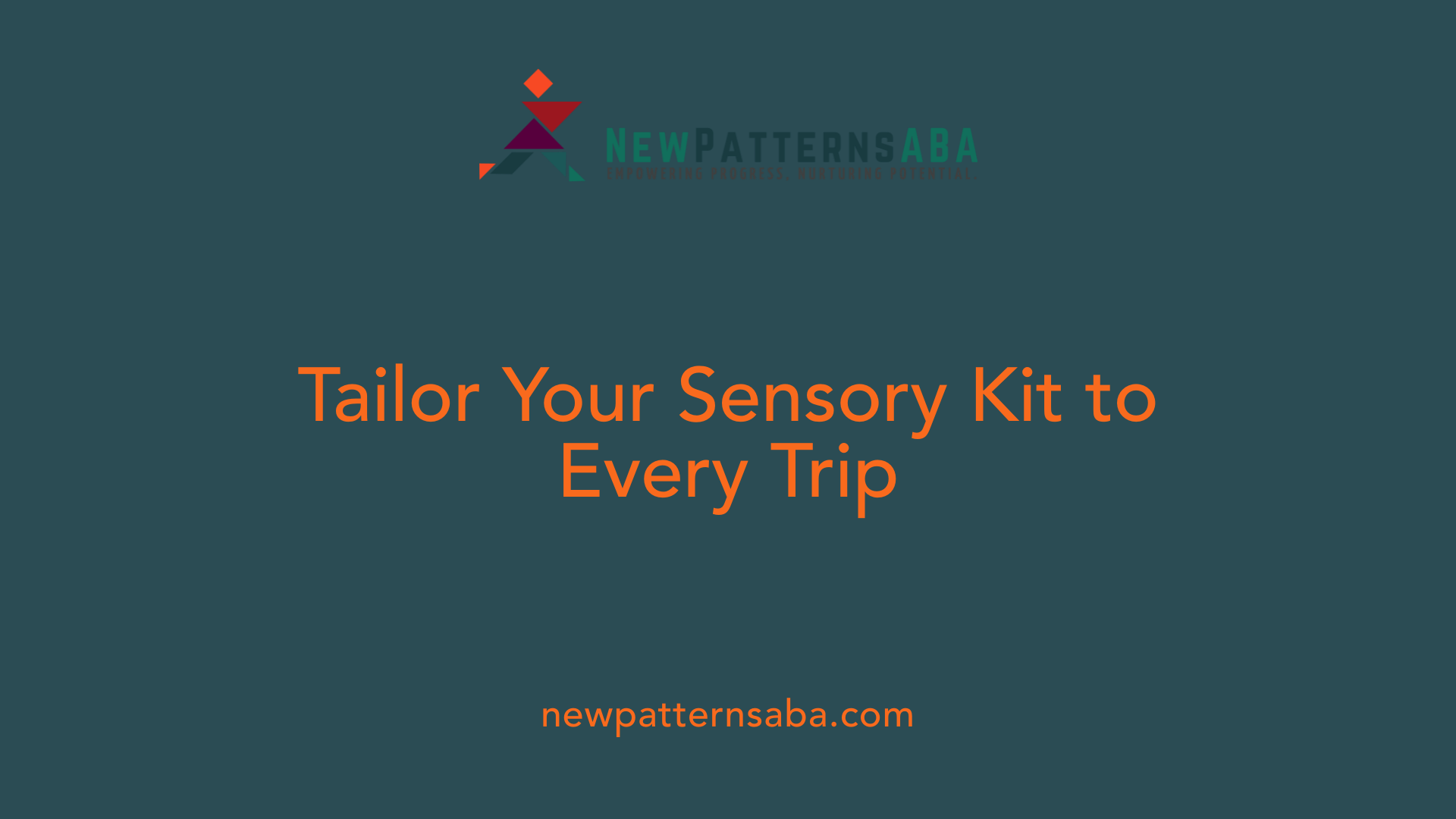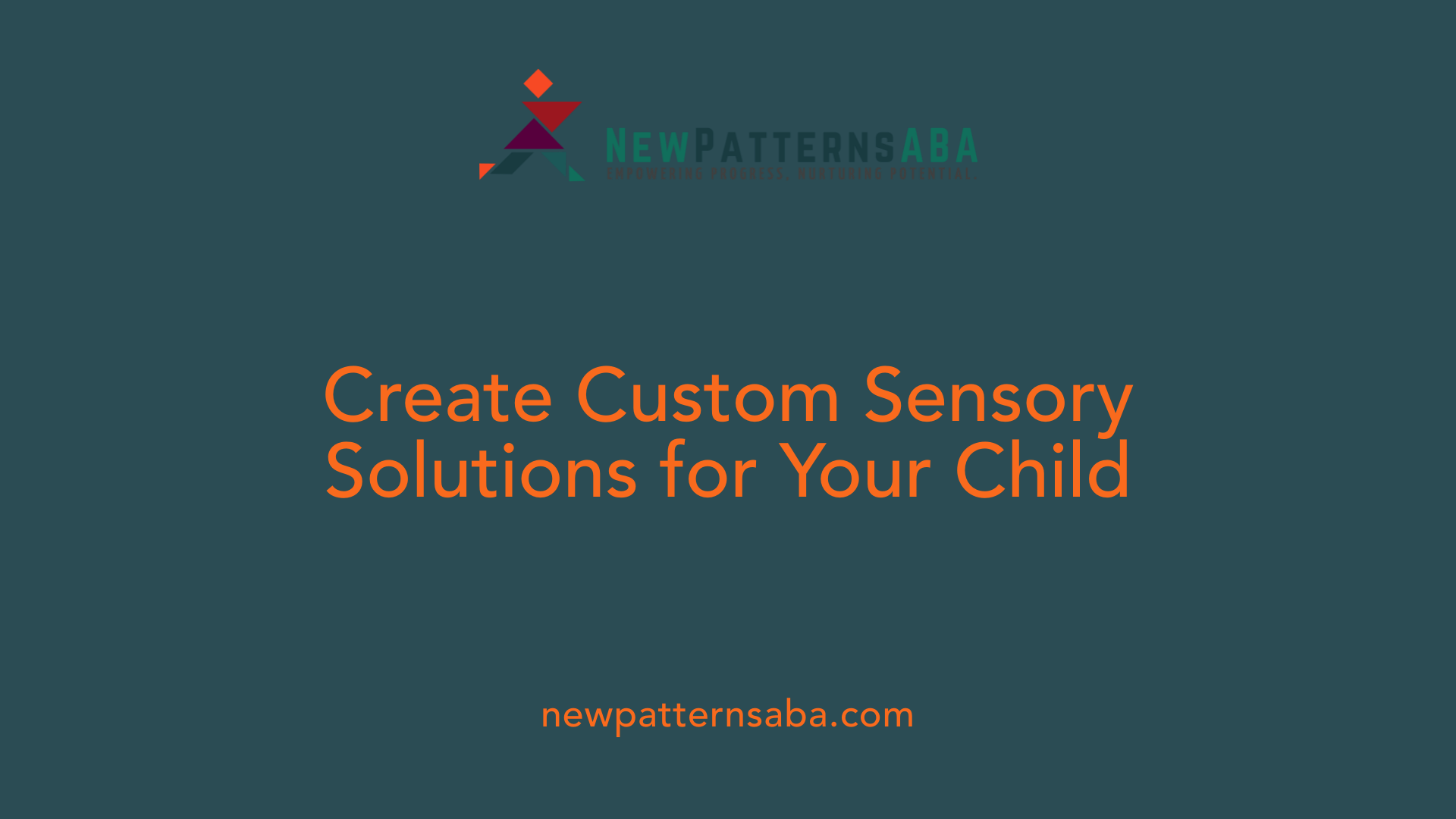Why Sensory Kits Matter for Autism Support on the Go
Traveling can be challenging for children with autism due to sensory sensitivities and the unpredictability of new environments. Sensory travel kits offer a practical and adaptable tool to help manage sensory overload, reduce anxiety, and support emotional regulation. Tailoring these kits to different travel scenarios and individual sensory profiles can significantly improve the travel experience for both children and their families.
Customizing Sensory Kits for Different Travel Situations

What Types of Sensory Travel Kits Can Be Tailored for Various Trips?
Sensory kits designed for children with autism can be customized depending on the travel scenario—quick errands, car journeys, or extended vacations. Each type of kit varies in size and content to meet the specific sensory and practical needs anticipated during the trip.
Which Specific Items Are Suitable for Each Travel Context?
Quick Trips: A compact kit held in a small makeup bag is ideal. It typically contains noise reduction tools like earplugs or headphones, soothing sensory items such as soft fabrics or stress balls, and oral sensory aids like chewy necklaces. These items help manage sensory overload efficiently during brief outings.
Car Travel: For longer trips, a larger kit can be packed to offer more comprehensive support. This may include noise-canceling headphones, light blocking accessories like hats or sunglasses, calming objects such as weighted lap pads or sensory bottles, and entertainment items like toys or books to sustain attention.
Vacations: A sensory backpack works well for vacations, carrying essential familiar items on the go. This kit can feature personal toiletries, a change of clothes for comfort, textured objects, calming weighted vests or blankets, along with favorite snacks and music players to maintain routine and reduce stress.
Why Is Adapting the Size and Contents Important Based on Trip Length and Setting?
Adjusting the size and contents of a sensory kit ensures that it is practical to carry and effectively supports the child's sensory needs without causing additional burden. A smaller kit suffices for short errands, while more extensive kits are necessary for longer periods away from home. Tailoring helps maintain emotional regulation, reduces anxiety, and promotes positive sensory engagement throughout diverse travel experiences.
Key Components in an Effective Travel Sensory Kit

Noise Reduction Tools for Sensory Overload
One of the most helpful items in a sensory travel kit is noise reduction tools, such as noise-canceling headphones. These can protect children with autism from overwhelming sounds during travel or outings, reducing sensory overload and helping maintain calm.
Calming and Soothing Sensory Items
Including calming items like weighted pads or vests helps provide deep pressure input, which can soothe anxiety and promote emotional regulation. For longer trips, weighted blankets or calming sensory bottles also offer comfort.
Oral Sensory Tools and Tactile Items
Oral sensory tools, such as chewable items or flavored oral tools, aid in self-regulation. Tactile items with different textures—like stress balls or soft fabric pieces—engage the sense of touch and support focus.
Visual, Auditory, and Olfactory Stimuli
A variety of sensory inputs enhances effectiveness. Visual aids like lava lamps or glow sticks, auditory stimuli such as bells or music boxes, and olfactory items like scented playdough or essential oils can all help a child engage senses in a controlled, enjoyable way.
Safety and Appropriateness
It's crucial to include sensory items that are safe and suitable for the child’s age and sensory profile. For instance, stress balls should be appropriately sized to avoid choking hazards, and all items must have no sharp edges or small detachable parts.
By thoughtfully assembling a travel sensory kit with these components, parents and caregivers offer children with autism a valuable tool to ease sensory challenges and support emotional wellbeing during outings or travel.
Personalizing Sensory Kits for Individual Needs and Engagement

Assessing the Child's Unique Sensory Profile to Select Appropriate Tools
Creating an effective sensory kit starts with understanding the child's individual sensory needs. Children with autism can have varying preferences for tactile, auditory, visual, or oral stimuli. Tailoring the kit to these specifics ensures that included items—whether noise reduction headphones or textured materials—are both soothing and engaging.
Involving Children in Choosing and Assembling Their Kits
Allowing children to participate in picking out and assembling their sensory kits makes the process more meaningful. This involvement fosters ownership and increases the likelihood that the child will use the tools effectively. Personal preferences, such as favoring visual over auditory stimuli or selecting preferred colors and textures, help make the kit truly supportive.
Using Household Items to Create Cost-Effective Sensory Tools
Sensory kits don’t have to be expensive. Simple household items like rice, beans, cotton balls, or crinkling paper can be repurposed to provide rich sensory experiences. These items can simulate textures and sounds important for sensory regulation and create a varied, cost-effective kit.
Gradual Introduction and Regular Updates to Kits Based on Development
Introducing sensory kits gradually allows caregivers to observe the child's reactions and adjust items accordingly. As the child grows and their needs change, kits should be updated to reflect new preferences and sensory challenges, ensuring ongoing effectiveness.
Encouraging Social Interaction Through Shared Sensory Experiences
Sharing sensory activities with siblings or friends can promote socialization, cooperation, and sharing skills. Including others in sensory play helps children learn social cues and builds connections while benefiting from the calming and focusing effects of the sensory tools.
Practical Tips for Assembling and Using Sensory Travel Kits

Using checklists to assemble kits thoughtfully and efficiently
Creating a sensory travel kit begins with a checklist to ensure all needed items are included without overpacking. This approach helps caregivers tailor kits to their child's unique sensory profile, including only those tools and toys that suit specific likes and needs.
Packing compactly for quick trips and sizing up for longer travel
For short outings, consider packing a small sensory kit in a compact makeup bag containing essential noise reduction tools, soothing items, and oral sensory tools for easy access and portability. Longer car trips or vacations call for larger kits with items like noise reduction headphones, weighted pads, sensory bottles, and favorite books or toys. A sensory backpack is practical for vacations, holding familiar toiletries, textured objects, changes of clothes, and calming items like weighted vests or blankets.
Keeping familiar and comforting items like favorite snacks and music
Including familiar items such as favorite snacks and music can provide comfort and a sense of security. These familiar stimuli positively engage the child's senses and contribute to emotional regulation during travel and unfamiliar environments.
Tips for observing child’s reactions to different sensory inputs
Introduce sensory kits gradually and watch the child's reactions carefully to identify which textures, sounds, or visual stimuli provide calmness and engagement. Observing responses allows caregivers to adjust the kit contents, avoiding overstimulation or items that do not resonate well.
Updating sensory kits to reflect evolving needs
Children's sensory preferences and needs change over time. Regularly updating sensory kits by adding new calming objects and removing ineffective or outgrown items ensures ongoing support and helps maintain the kit's effectiveness during travels and outings.
The Broader Impact of Sensory Kits Beyond Travel

How do sensory kits serve as behavioral support tools for emotional regulation?
Sensory kits provide children with autism tools to engage their senses in controlled, soothing ways, which can reduce anxiety and improve focus. By including items of varied textures, colors, and sounds—such as weighted blankets, noise-canceling headphones, or scented playdough—these kits help children self-regulate emotions during challenging moments. This sensory engagement is now recognized as an effective behavioral support strategy to promote emotional balance.
Can you share success stories where sensory kits helped in crisis situations?
Yes. For instance, a child named Alex, who had undiagnosed autism and sensory sensitivities, was successfully calmed during a police interaction thanks to the Autism Sensory Kit (ASK). Similarly, Jack, an adult with autism, found immediate relief from anxiety through items in these kits. Such cases showcase how sensory kits not only ease distress but also facilitate cooperation during crises involving individuals with autism.
What training has been provided to first responders involving sensory kits?
First responders, including police officers in Bell County, underwent specialized training on autism awareness coupled with the use of sensory kits. Programs like the 'Autism and Law Enforcement' class equipped over 400 officers to recognize sensory challenges and effectively use sensory-friendly tools like noise-canceling headphones and communication cards during encounters. These efforts significantly enhanced officers' understanding and improved outcomes in interactions with individuals with autism.
How are sensory tools integrated in juvenile justice systems to support individuals with autism?
The Bell County Juvenile Services incorporated the Checklist for Autism Spectrum Disorder (CASD) at intake to identify youth with autism or developmental disabilities promptly. Alongside this, sensory kits are utilized to provide calming and sensory support, which helps prevent escalation and inappropriate detention. This integration ensures that young individuals receive appropriate accommodations tailored to their sensory and behavioral needs within the justice system.
| Aspect | Description | Example/Benefit |
|---|---|---|
| Behavioral Support | Kits aid emotional regulation through sensory engagement | Reduced anxiety and improved focus |
| Crisis Intervention Success | Calming individuals during police encounters | Positive cooperation from individuals |
| First Responder Training | Autism awareness classes combined with sensory kit usage | Enhanced understanding and response |
| Juvenile Justice Integration | Use of autism checklists and sensory kits at intake | Better tailored youth support |
Creating Empowering Travel Experiences with Sensory Kits
Sensory travel kits represent a vital support strategy for children with autism, allowing them to navigate the complexities of travel environments with greater comfort and confidence. By thoughtfully tailoring kits to individual preferences and specific travel scenarios, families can ease sensory challenges and promote emotional well-being. Beyond travel, sensory kits have demonstrated powerful benefits in diverse contexts, including emergency response and juvenile justice, underscoring their importance as accessible, flexible tools in autism support. Embracing sensory kits not only empowers children and caregivers on the move but also fosters broader understanding and inclusion for those with autism.





